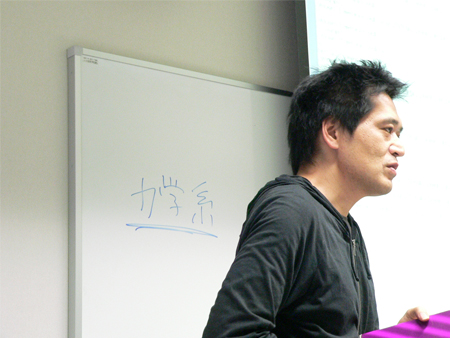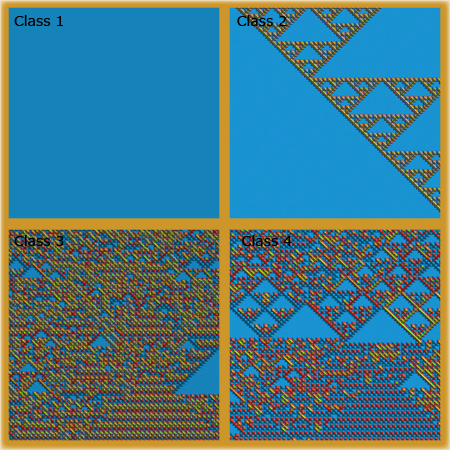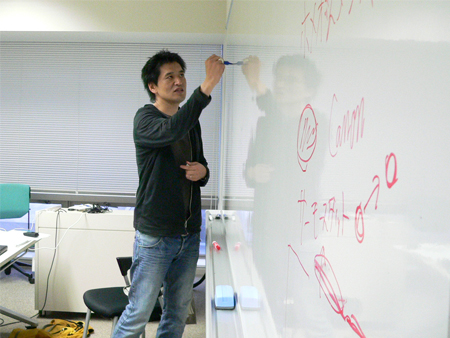[Report] Movement Creates Life
On May 30, there was a talk by Prof. Takashi Ikegami (Associate Professor of The University of Tokyo, Department of General Systems Studies). He has been mainly working on the fields of complex systems, artificial life, and robotics. The talk was about his recent book, Movement Creates Life (Ugoki ga Seimei wo Tsukuru).

According to Prof. Ikegami, the ways of understanding which govern today’s life sciences are, above all, testability and predictability. To address the problem of life and consciousness, he insisted, we have to go beyond current ways of understanding and to develop a completely new one. To accomplish this, he places “the constructivist approach” at the heart of his study.

In some nonlinear dynamical systems (such as cellular automata), the differential equations which express their time evolutions generate chaotic solutions under certain initial parameters. Chaotic solutions are randomly fluctuating. Although dynamical systems are deterministic, we can find contingent patterns within them. According to Prof. Ikegami, a key to the problem of life and consciousness might lie in a certain class of generated patterns, which he called “Class 4.” The patterns in Class 4 show randomness locally and periodicity globally. They are products of intersections between determinacy and contingency. Paradoxically speaking, Class 4 generates instability in a stable way. Prof. Ikegami said that this intriguing structure of these patterns is a characteristic of living phenomena and that a new horizon of understanding might spread out from such a structure. His “constructivist approach” is a way to find “movements” unique to life and consciousness by creating artificial lives using computer simulation.

Prof. Ikegami also emphasized the significance of finding “the Middle Layer” peculiar to living phenomena. The Middle Layer provides us a certain abstract scale describable and intelligible without referring to their physical basis. He has tried to actually create a Middle Layer with artificial lives.

As far as the discussion goes, it had been dynamically developing from the importance of the Middle Layer in brain activities to the stability of homeostasis; from the autonomy of life to the embodiment in its environment; from “the Third-Term Music” (his art work) to Nam-June Paik’s robot.
The new horizon being explored by Prof. Ikegami can be called, as Prof. Murata (the chair of this talk) pointed out, a “second-personal” way of understanding, neither third-personal nor first-personal. His talk was stimulating and full of anticipation. We could, indeed, feel the fetus moving of a future science waiting to be born.
Reported by Mineki Oguchi






